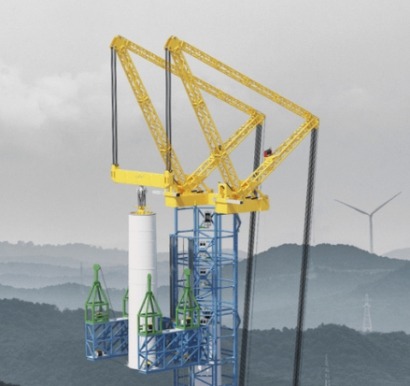
This shift unlocks crucial advantages for the industry. It streamlines the construction process, cuts labor and transportation costs and makes energy more accessible in hard-to-reach places like offshore sites or remote rural areas. Self-building turbines can make clean energy deployment more cost-effective and widely scalable by removing significant barriers to turbine installation.
Self-assembling wind turbines combine automation, modular design and robotics to create a smarter, faster way to build renewable energy systems. Rather than using massive cranes and large construction crews, they break down installation into smaller, repeatable tasks that machines can handle independently.
Modular engineering is at the heart of this concept. Each component readily fits together, while robotics and automated tools do the heavy lifting and precision work. It’s a dramatic leap forward for wind energy because it cuts down on labor, speeds deployment and opens the door to building turbines in remote, previously inaccessible places.
The WindSpider is one of the most promising examples of this technology. It eliminates the reliance on ground-based cranes by building a scaffold directly around the wind turbine tower, assembling it section by section as it climbs. A small crane unit attached to the scaffold lifts and installs turbine parts without external support.
This self-contained setup dramatically reduces the need for specialized equipment. It simplifies construction, especially in hard-to-reach or offshore locations. Compared to the traditional processes, this cutting-edge, modular method offers a safer and more adaptable solution for the next generation of wind farms.
Building wind turbines the conventional way involves massive cranes, complex logistics and high labor costs that can slow down projects and drive up expenses. Here’s a breakdown of the typical steps and challenges involved in traditional turbine construction.
Robotics, AI and modular engineering have revolutionized wind turbine construction. These technologies work hand in hand to create a more accurate and less labor-intensive building process. Robotics perform repetitive and physically demanding tasks, which improve safety and speed.
Meanwhile, AI brings adaptability to the jobsite, helping machines respond to real-time changes in terrain or alignment issues. Modular engineering predesigns each turbine component to fit perfectly, reduce the error margin and cut down on waste. These tools allow wind energy projects to move faster with fewer delays and less manual labor.
Building information modeling is a linchpin of this innovation. This digital planning system maps out every part of the project before breaking ground. With BIM, teams can coordinate every detail, avoid costly mistakes and reach up to 92% success in meeting deadlines and budget goals.
Emerging tools like 3D printing are also valuable, allowing for quick on-site production of customized parts. Drones and autonomous machines help with site mapping and component placement — especially in remote or offshore locations. This technology results in a more connected approach to building wind turbines that match the pace and scale of the demand for clean energy.
One of the most remarkable advantages of self-assembling turbines is the dramatic drop in labor and logistics costs. Replacing large construction crews and heavy equipment with smart, automated systems allows project teams to cut expenses and simplify operations from start to finish.
Faster deployment is another benefit. These speedy, flexible systems simplify installing turbines in more environments. These include rugged terrain, offshore platforms and other hard-to-reach or hazardous locations that traditionally slow projects down.
The benefits are equally impressive on the environmental side. Automated construction reduces the need for fuel-powered equipment, which means fewer emissions and a smaller carbon footprint during installation. Many of the latest systems also use all-electric lifts that produce zero emissions while operating.
Even hybrid lifts — which combine electric and fuel-powered capabilities — run cleaner than traditional units. This shift to cleaner methods supports the renewable energy mission from the ground up, making each turbine a source and product of clean power.
Despite self-assembling wind turbines’ exciting potential, the technology is still in its early stages and faces a few considerable hurdles before it can scale. Most systems are in testing or pilot phases, forcing developers to deal with strict regulatory frameworks without automation in mind. These approval processes can slow down innovation and add complexity to deployment plans.
There’s also the high cost of research and development, which can make early adoption financially risky for smaller companies or startups. Building the technology, refining the software and training teams require a significant upfront investment. While automation offers impressive efficiency gains, it also sparks concern about job displacement in the construction sector. Many traditional roles — especially in turbine assembly and transport — could shift or disappear as machines take over crucial tasks.
Self-assembling wind turbine technology could scale over the next five to 10 years as automation becomes more affordable and widely adopted across the renewable energy industry. This tech offers a smarter way to handle complex logistics, streamline transport and simplify installation.
It’s also part of a larger movement toward self-constructing infrastructure. For example, 3D-printed buildings and autonomous bridge assembly aim to reduce costs, labor and emissions. Making wind turbines faster and easier to build allows this innovation to accelerate clean energy adoption and expand access to sustainable power worldwide.
The future of clean energy lies in smarter, faster and more sustainable construction powered by innovation. It can create an eco-friendlier world where machines build the foundation of a cleaner tomorrow.

